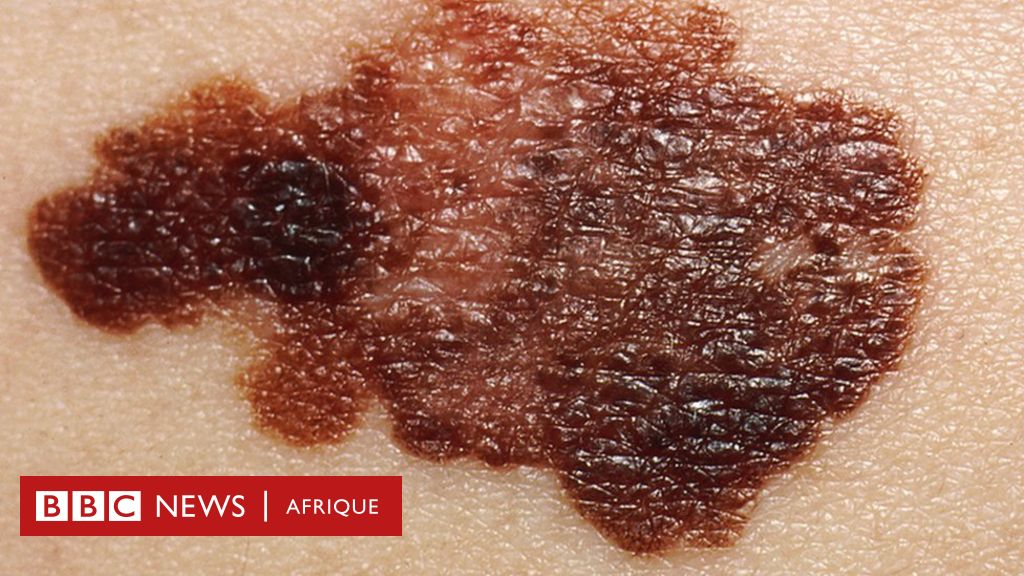- Julia Crabs
- For BBC News Brazil in São Paulo
Photo copyright, Getty Images
Excessive exposure to UV (ultraviolet) rays – which reach us directly through the sun’s rays and can damage skin cells – is the main cause of skin cancer.
Knowing how to identify possible signs of different types of skin cancer — and how to protect yourself from the disease — is essential.
The earlier the disease is discovered, especially in the case of melanoma, the more aggressive type, the better the chances of successful treatment.
Photo copyright, Getty Images
Common symptoms of skin cancer
Non-melanoma skin cancer is the most common malignancy in Brazil and will account for 31.3% of cancer cases between 2023 and 2025, according to INCA (National Cancer Institute) estimates.
It can be classified into basal cell carcinoma and squamous cell carcinoma.
The first type is the most common, normally growing more slowly and usually manifesting as a pink nodule lesion on the exposed skin of the face, neck and scalp. The sign may also be persistent, red, jagged-edged plaque that bleeds easily.
As for squamous cell carcinoma, more common in men, it determines the formation of a rapidly growing nodule, with an ulceration (wound) that is difficult to heal even four weeks after its appearance, or a reddish, raised, irritated area and itchy.
“Both of these types of cancer are linked to high exposure to sunlight and should be prevented by applying sunscreen. Also, frequent visits to the dermatologist are important to detect cancer in its early stages,” points out Sheila Ferreira, oncologist at the ‘Oncoclinicas. group and specialist in clinical oncology at the AC Camargo Cancer Center hospital.
Skin cancer called melanoma, although considered to have a low incidence, is the most aggressive and requires special attention.
“Melanomas are malignant neoplasms of melanocytes, which are pigmented cells located in the layer responsible for the renewal of the epidermis (the most superficial part of the skin),” explains dermatologist Bethania Cavalli of HSPE.
Photo copyright, Getty Images
The onset of melanoma is also linked to sun exposure, and the cancer has metastatic potential (when cancer cells spread to other organs). That’s because, says Cavalli, cancer cells have unlimited potential to replicate, in addition to their ability to invade tissue and evade the immune system.
These are usually the cases that start with the appearance of dark spots on the skin, which show changes over time.
One way to identify if a spot or spot could pose a hazard is to use the ABCDE scale:
- A for asymmetry (if you divide the point into four parts, they are not equal)
- B for jagged edges
- C for color, which evaluates the change in coloration
- D for diameter (the tip is larger than six millimeters)
- And by evolution (color change, growth, itching and bleeding)
“Melanomas are more common on the backs of men and the legs of women. Black and Asian patients have a more common location on the feet and hands, which we call acral melanoma,” explains Bethania Cavalli.
Photo copyright, Inside Creative House/Getty Images
When changes in the spots and plaques are noticed, they should be evaluated by a dermatologist.
Skin cancer risk factors
The main risk factor for skin cancer, whether melanoma or non-melanoma, is ultraviolet radiation.
This light, Cavalli says, directly damages cellular DNA and induces oxidative stress, leading to genetic mutations that trigger skin cancer.
“In addition to ultraviolet rays, family history and having multiple spots are also risk factors. Transplant patients have a higher risk of developing skin cancer because they use drugs that interfere with immunity (immunosuppressants).”
Carried out by the person himself in parallel with the health professional, regular observation of the spots on our body makes it possible to identify new signs or changes that did not exist until then.
“Today we have a device called a dermatoscope that allows us to evaluate the spots in more detail and at high magnification, as well as skin inspection evaluation. When in doubt, we have yet another exam, confocal microscopy, which allows us to obtain high resolution imaging and microscopic appearance, as if it were an optical biopsy, without the need to cut.”
The doctor also offers body mapping via dermatoscopy as an option, a technique that evaluates each point individually with image registration and allows the signs to be monitored to observe any changes.
“This exam is very useful for patients who have multiple stitches and especially those who have had a history of melanoma.”
Photo copyright, Getty Images
Skin cancer treatment options
When the cancer is discovered at an early stage, the indication is that the surgical resection of the lesions be performed by a qualified specialist, in order to properly approach the margins around the tumor, leaving no parts that can be harmful.
“This applies to both cases of melanoma and non-melanoma skin cancers. Surgery is in fact able to resolve the majority of cases, making other complementary treatments rarely necessary,” explains Sergio Azevedo, oncologist of the Oncoclínicas group and Professor at the Faculty of Medicine of UFRGS (Federal University of Rio Grande do Sul).
If the disease has a more severe stage, subtype or extent, the specialist indicates that other methods of treatment can be used.
In more advanced cases and with metastases, including melanoma, immunotherapy – treatment with drugs that activate the immune system so that it becomes able to fight against malignant cells – has proven to be an alternative with good results for quality of life and the well-being of patients.
Another type of intervention in these advanced scenarios, says the doctor, for a small number of patients whose melanoma has a BRAF gene mutation, is the use of oral drugs that inhibit abnormal cell proliferation.


